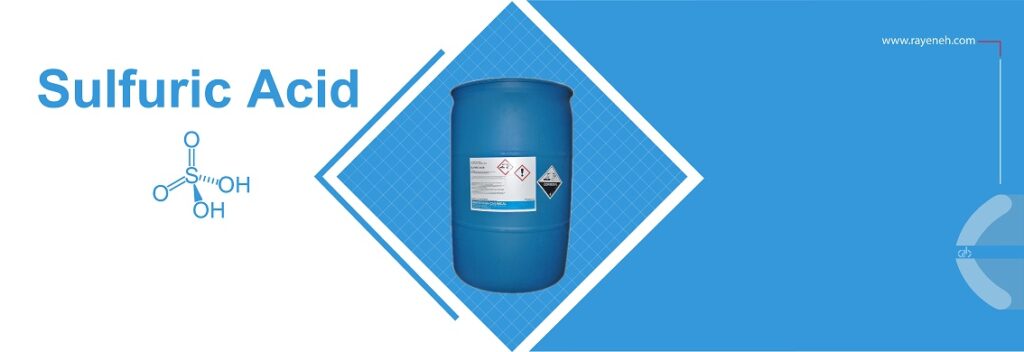
Sulfuric acid is a mineral acid. This chemical is a colorless, odorless, high-viscosity liquid that is soluble in water and its reaction with water is very exothermic.
The volume of production of this chemical in the world is so large that it is usually referred to as the “King of Chemicals”.
This chemical was discovered for the first time by Jaber bin Hayyan. He obtained this acid by distilling iron sulfate minerals (known as green alum) and copper(II) sulfate.
Sulfuric acid can also be extracted from the dissolution of SO3 gas in water. This chemical has two industrial and laboratory grades, the laboratory grade is much more transparent than the industrial grade.
| Properties | Value |
|---|---|
| Molecular mass | 98.078 g/mol |
| Melting Point | 10 °C |
| Boiling point | 337 °C |
| Appearance | clear and colorless liquid |
Application
- Chemical industries
- Fertilizers
- Water and sewage treatment
- Textile and paint industries
- Production of explosives
- Paper industries
- Production of car batteries and battery water
- Pharmaceutical industries
- Rubber industries
- Refining
Packing
Sulfuric acid can be supplied in 20-liter gallons, 220-liter barrels and 1000-liter tankers.
Chemical Formula
- H2SO4
Other names
- sulfur ink
- hydrogen sulfate
- oil of vitriol
